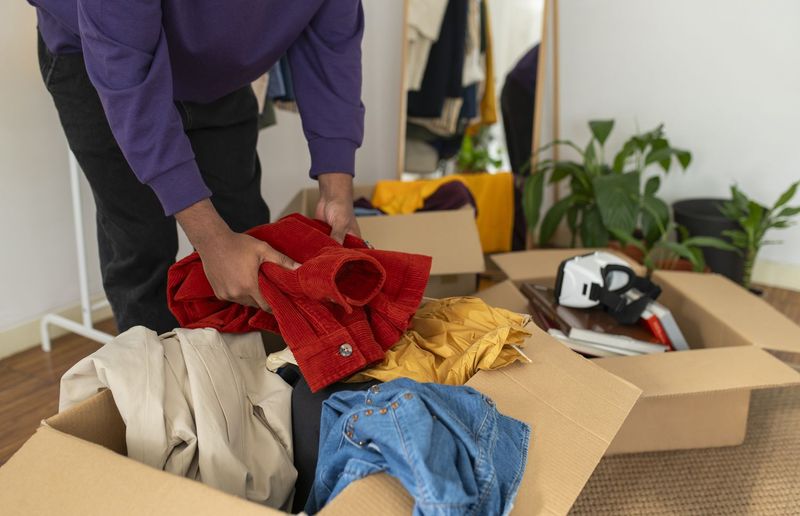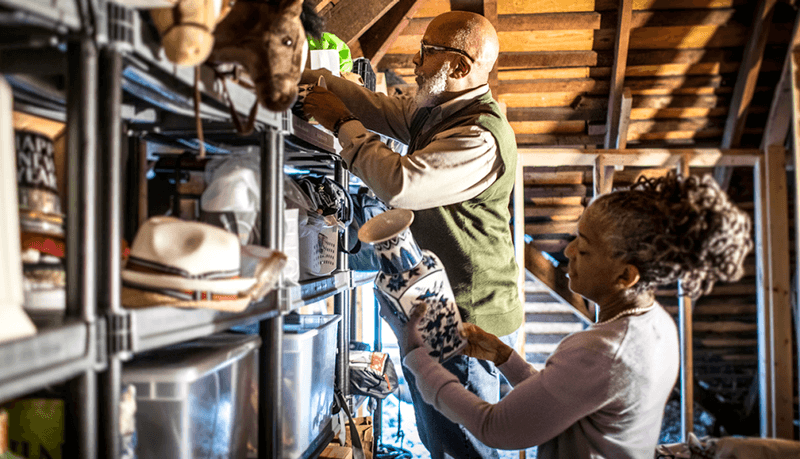Have you ever wondered how to declutter your home while leaving a meaningful legacy? Swedish Death Cleaning is a thoughtful approach to organizing your belongings before you pass away, so loved ones aren’t burdened with the task.
This Scandinavian practice isn’t as morbid as it sounds – it’s actually a practical and loving way to simplify your life while you’re still here to enjoy it.
1. The Meaning Behind the Name
Don’t let the name scare you away! ‘Döstädning’ literally combines the Swedish words for death (‘dö’) and cleaning (‘städning’), but it’s more about consideration than mortality.
This mindful process encourages people to gradually sort through possessions throughout their later years rather than leaving a chaotic mess for family members to handle after they’re gone. The concept actually celebrates life by focusing on what truly matters.
2. Not Just for the Elderly
While often associated with seniors preparing for life’s final chapter, Swedish Death Cleaning benefits people of all ages. Young adults embracing minimalism find its principles equally valuable for creating intentional living spaces.
Anyone who’s moved houses knows the burden of unnecessary stuff. Starting this practice early means less accumulated clutter throughout life. Plus, unexpected accidents happen – organizing your belongings is a kindness to yourself and others regardless of your age.
3. The Five-Category Approach
Feeling overwhelmed by the process? Many practitioners divide belongings into five manageable categories: keep, fix, donate, sell, and discard.
This systematic approach prevents decision fatigue by creating clear pathways for each item. Start with less emotionally charged categories like kitchen gadgets before tackling sentimental items. Breaking the process into these distinct groups transforms an intimidating project into a series of achievable tasks.
4. The Emotional Benefits
Surprisingly, this decluttering method often brings profound emotional relief. Many practitioners report feeling lighter and more at peace after releasing possessions that no longer serve them.
Imagine the liberation of knowing your loved ones won’t face overwhelming decisions during their grief. This practice creates space for healing conversations about mortality and legacy while you’re still present. The process honors your life story while preventing your belongings from becoming a burden.
5. The Fulkerson Rule
Have you heard about the clever “Fulkerson Rule”? This practical guideline suggests that if nobody would walk into your house and want an item if you weren’t there, it probably doesn’t need to stay.
Consider each possession through this lens of objective value rather than sentimental attachment. Would someone actually want that collection of hotel shampoo bottles or broken electronics? Probably not. This rule helps cut through emotional fog to make clearer decisions about what truly deserves space in your home.
6. The Secret Shame Box
Everyone has those embarrassing items they’d rather nobody discover after they’re gone. Swedish Death Cleaning has a brilliant solution: the secret shame box!
This special container holds personal items you’d prefer family members not find—whether love letters, diaries, or other private possessions. Simply mark it for disposal upon your death without inspection.
7. The ‘Maybe’ Danger Zone
Beware the treacherous ‘maybe’ pile! Creating this undecided category often becomes a procrastination trap where items linger indefinitely without resolution.
Instead of postponing decisions, Swedish Death Cleaning encourages clear yes-or-no choices about each possession. If you’re truly uncertain about something, try boxing it up with a date. If you haven’t needed or thought about it by that date, that’s your answer.
8. Digital Decluttering Matters Too
Your virtual presence needs tidying just as much as your physical space! Digital Swedish Death Cleaning involves organizing passwords, online accounts, and computer files for those who might need access later.
Consider creating a secure document with login information for important accounts. Delete unnecessary files, organize precious photos, and clear out those thousands of unread emails.
9. The Gift of Giving Now
Why wait until you’re gone to share meaningful possessions? One delightful aspect of this decluttering method involves giving cherished items to loved ones while you’re still alive to see their joy.
Imagine watching your granddaughter wear your vintage jewelry or seeing your favorite books finding new life in a friend’s collection. This approach transforms decluttering into a celebration of generosity. Plus, you’ll know your treasures went exactly where you wanted rather than being distributed after you’re gone.
10. The One-Year Test
Struggling with decisions? The one-year test offers a practical solution for borderline items. If you haven’t used something in the past year, chances are you won’t miss it going forward.
Seasonal items get one full cycle before judgment day arrives. Of course, valuable heirlooms and truly meaningful keepsakes are exceptions to this rule. This time-based approach cuts through indecision by providing clear evidence of an item’s actual role in your daily life versus its theoretical usefulness.
11. The Photograph Solution
Can’t bear to part with bulky sentimental items? Photography offers a brilliant compromise that preserves memories without consuming physical space.
Take high-quality photos of children’s artwork, trophies, or other meaningful-but-impractical keepsakes before letting them go. Create digital or physical albums of these memory snapshots. This approach honors the emotional connection while freeing up valuable space and reducing the physical burden left for others.
12. The Ripple Effect on Consumption
Many practitioners find this decluttering method permanently changes their purchasing habits. After experiencing the freedom of less stuff, mindless acquisition loses its appeal.
You’ll likely start asking tougher questions before bringing new items home: “Will someone have to deal with this later?” and “Does this truly add value to my life?” This shift toward intentional consumption creates a virtuous cycle. Less comes in, less accumulates, and less eventually needs cleaning out.
13. The Psychological Weight of Stuff
Clutter affects us more deeply than we realize. Research shows excessive possessions can increase stress hormones, reduce focus, and even disturb sleep patterns.
Many practitioners report improved mood and mental clarity after simplifying their surroundings. The process helps distinguish between items that genuinely enhance life and those that merely occupy space while draining energy.
14. The Environmental Impact
Mother Earth appreciates Swedish Death Cleaning too! This thoughtful approach to possessions helps reduce the environmental burden of consumer culture by keeping usable items in circulation rather than landfills.
When you donate functional items, you extend their useful life and reduce demand for new production. Properly recycling or disposing of what can’t be reused demonstrates environmental responsibility.
15. The 20-Minute Method
Feeling overwhelmed by the entire process? Try the 20-minute method, a manageable approach recommended by Swedish Death Cleaning experts.
Set a timer and focus completely on decluttering one small area for just 20 minutes. Stop when the timer rings, even if you’re in the middle of a project. This bite-sized approach prevents burnout while still creating progress.
16. The Conversation Starter
Surprisingly, Swedish Death Cleaning often opens doors to meaningful family discussions that might otherwise remain closed. The process naturally invites conversations about values, memories, and wishes.
While sorting through possessions, stories emerge about family history and personal journeys. These moments create opportunities for deeper connection and understanding between generations.
17. The Legacy Perspective
What if we viewed possessions through the lens of legacy rather than ownership? Swedish Death Cleaning encourages this profound shift in perspective.
Consider what each item communicates about your values and life story. Which possessions truly represent what matters most to you? This approach transforms decluttering from mere organization into curation of your personal legacy.
18. The Gentle Timeline
Unlike weekend decluttering blitzes, Swedish Death Cleaning unfolds as a gradual process over months or even years. This intentionally gentle timeline acknowledges the emotional nature of the work.
Start with easy categories like duplicate kitchen items before progressing to more sentimental possessions. Allow yourself time to process feelings that arise. This methodical approach prevents emotional overwhelm while still creating progress. Remember, it’s a marathon, not a sprint—and that’s precisely the point.



















